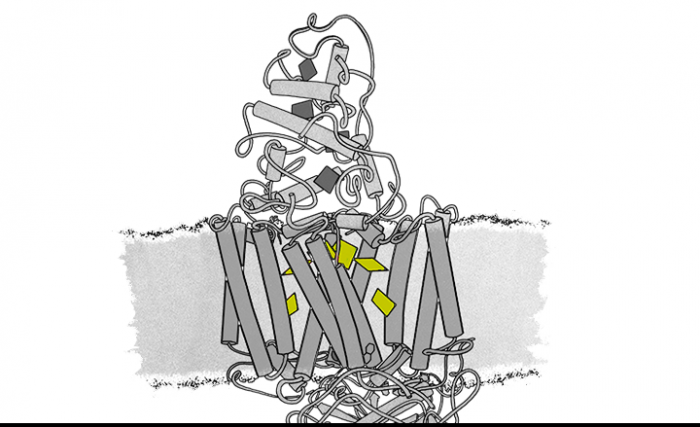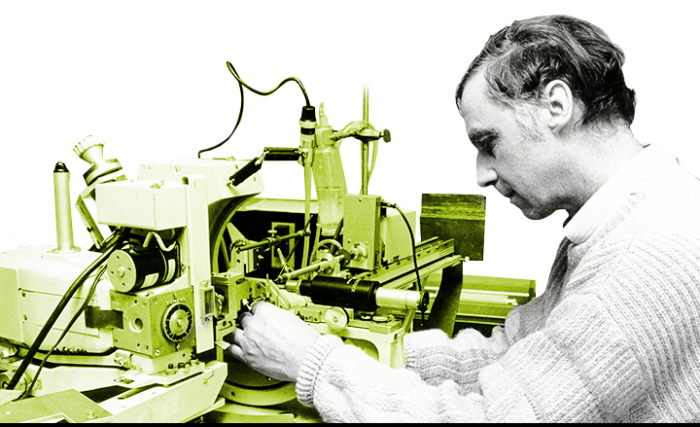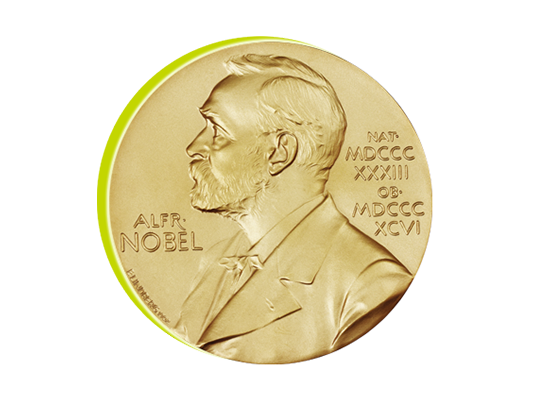Congratulations to
Photosynthesis

Bild: iStock.com / NataliaBarashkova

Bild: iStock.com / NataliaBarashkova
For a long time, the most important chemical reaction on Earth, photosynthesis, was one of the greatest mysteries of biology. How can plants grow with just light, air and water? The puzzle was eventually solved in 1985 by a team led by chemist Robert Huber from the Technical University of Munich (TUM) – an achievement that won him the Nobel Prize a few years later.
Photosynthesis using sunlight is the basis for all higher life forms on Earth. The question is, how do plants and countless other organisms obtain energy from the sun? The chemist Robert Huber did not look to green leaves for the answer – but rather to purple bacteria. These microorganisms, which live in warm salt ponds, were the focus of Huber’s research group in the early 1980s. Both Hartmut Michel and Johann Deisenhofer took a lead role in this research.
Just like photosynthesis in green plants and algae, purple bacteria also use sunlight to build organic substances. The decision to focus on these microorganisms helped the three researchers explain the reaction, a breakthrough that was rewarded with the Nobel Prize in Chemistry in 1988.
Huber specialized in demonstrating the structure of complex proteins using X-ray crystallography. Hartmut Michel had earlier managed to crystallize the protein that plays a key role in the photosynthesis of purple bacteria. The three scientists exposed the structure of the macromolecule atom by atom by examining it with X-ray crystallography. This allowed them to gradually gain an understanding of its inner workings.
In 1985, they succeeded in determining the structure of the reaction center in photosynthesis. Their explanation of “the most important chemical reaction in the biosphere of our Earth” was later recognized by the Nobel Prize Committee. The structure of the central molecule of photosynthesis, chlorophyll, had actually been uncovered around 60 years previously by another chemist from TUM called Hans Fischer, who received the Nobel Prize in 1930.

All higher forms of life on Earth depend on photosynthesis, as it provides living organisms throughout the entire food chain with energy and organic substances. Plants, green algae and many kinds of bacteria use energy from sunlight to convert water and carbon dioxide into carbohydrates, which are a source of nutrients like starch or cellulose. The splitting of water also releases oxygen, which other organisms need to breathe. This is how the oxygen in our planet’s atmosphere was created over billions of years.

Huber and his colleagues determined the three-dimensional molecular structure of the protein complex responsible for photosynthesis, the biological photocell. It is around the reaction center of this photocell that chlorophyll molecules harvest photons from sunlight and pass on their energy in the form of electrons. After many intermediate stages, they drive the water-splitting reaction in green plants and algae. Chlorophyll is also responsible for the green color we see all around us. Plant chlorophyll mostly absorbs red and blue light, which leaves green as the color reflected by the plant.

“Proteins are nice, crystals are nicer,” maintains Robert Huber, who achieved his greatest scientific breakthroughs through the structural analysis of crystallized proteins, in particular of drug receptors so important for medical research. Even as a child he was fascinated by crystals. He used to collect minerals while hiking in the Alps, intrigued by their clarity and symmetrical structures. His favored technique for studying protein crystals is X-ray crystallography. Here, the beams are deflected by the crystal lattice with characteristic diffraction angles, producing spot patterns as the diffraction image. The spatial structure of the protein can then be reconstructed using mathematical equations and drawing on the insights that come from experience. Deciphering this puzzle has always fascinated Huber – a passion he inherited as an undergraduate and PhD student from TUM Professor Walter Hoppe.
“All our nourishment has its origin in this process, which is called photosynthesis and which is a condition for all life on earth.”

Nobel Committee for Chemistry, 1988, at the concession of the Nobel prize to Robert Huber, Hartmut Michel and Johann Deisenhofer
Picture: © ® The Nobel Foundation: Photo: Lovis Engblom